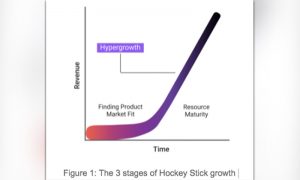Nishant Patel, Founder & CTO at Contentstack, completed his degree in B.S. in Computer Science from The Ohio State University. Before making his first foray into the world of cloud-native and SaaS technologies, Nishant was a senior architect at TIBCO Software, where he helped design the foundation for modern-day enterprise integration. Nishant founded Raw Engineering in 2007. As the CTO, he ran an R&D incubator to build and deliver industry-leading SaaS products like Raw Engineering’s MBaaS, a Digital Fan Experience Platform, Built.io iPaaS, a leading Integration platform as a service, and Contentstack, the leading API-first CMS for Enterprise.
The SaaS (Software as a Service) industry is on a fast track, and its numerous players have taken only a few months to reach unicorn status. In 2021 alone, over 35 SaaS companies from India made $20M+ annual recurring revenue (ARR), and around 7 to 9 of those companies witnessed the $100M ARR goal. Such whirlwind events have brought a pertinent question to the limelight: How fast is fast enough?

Figure 1: The 3 stages of Hockey Stick growth
Being the most contemporary and fastest-growing industry, SaaS has changed the game entirely. Companies can no longer apply conventional growth strategies as this new-age disruption requires an all-encompassing holistic approach – covering business changes, commitment to processes & methods, and all that comes in between.
To prepare your SaaS business for hyper-growth, your application must be ready to scale at a moment’s notice. And the moment is NOW.
What exactly is SaaS hyper-growth?
Hypergrowth denotes a phase of rapid expansion where companies experience a Compound Annual Growth Rate (CAGR) of 40% or higher.
So, what is the secret formula behind achieving hyper-growth? And how can you supercharge your SaaS business model to sustain it?
Interestingly, there is no set standard for high-growth SaaS companies. Yet, each of them has exhibited a few common characteristics that helped them build a successful business.
Let’s look at these characteristics individually.
- Building the right functions with the right people
Most startup founders are bootstrapped in their initial stages, hustling through every business function, wearing multiple hats. But a fundamental prerequisite of scaling is the establishment of dedicated business teams and processes.
Each department – be it Engineering, BizOps, Finance, IT Services, Marketing, or HR – must be staffed with competent individuals who can be entrusted to set-up processes, define goals, identify ownership and deliver expected outcomes.
And speaking of outcomes, goal-setting frameworks such as Objectives & Key Results (OKRs) must be adopted and prioritized to facilitate transparent goal setting & tracking. Any scaling drive demands accountability with a ruthless sense of priority, and the onus lies with the founding team in defining and implementing processes with rigor.
Setting up your employees for success
Enabling the right functions in an organization is incomplete without having the right people to own those processes and systems. Hiring talent alone is not going to help.
Set your employees on the path of success by investing in their continuous learning, upskilling and development; give them the freedom to experiment and fail. Establish defined growth paths as the business scales up, and offer them attractive compensation with benefits.
It is also prudent to forecast and build processes for accommodating the spurt in growth of new employees. Often companies in their pursuit of growth, tend to overlook this aspect which leads to problems later.
Establishing the right connection with your customers
Customers know what they want, hence their feedback is an important step for start-ups seeking hyper-growth. The key is to listen to your existing customers and find ways to accommodate their expectations. This should help iterate a dynamic product that is accessible and relevant for a wider range of customers. And the process is ongoing and self-enriching, once set in motion.
Of course, no product could be engineered to address the needs of every customer; so you sometimes need to say ‘no’ and simultaneously hold your ground in conversations with demanding customers.
- Investing in your product
Iterating the product with time to stay in sync with the ever-shifting needs of the market is key to a hyper-growth SaaS business. However, when you have reached out to a specific range of customers, try to keep the product stable and functional so that it continues to meet the needs of your existing customers.
As against the easy way of adding more features to the existing products, breaking a large monolithic system into microservices architecture is a good idea.
Ideally, a roadmap for the decomposition of microservices should be determined at a stage where a product starts finding reasonable traction with customers.
- Building a strong organizational design
When a SaaS start-up is seeking hypergrowth, between managing product decisions, prioritizing feature releases, and establishing feedback loops to carefully improve a product and related services, it becomes more complex & challenging.
At this stage – investing time and effort in adopting and internalizing frameworks and tools for decision-making, tracking and measuring progress; having a competent and robust program management team; setting up a BizOps or IT governance team; acquiring your internal systems to offer flexibility to scale; focusing on the organizational design to align with the OKRs; and adopting the right software, practices, and processes – will be beneficial.
- Managing employee transition (to a scaled-up company)
The hustle mode suits an early-stage start-up, but for a start-up scaling up seeking a hyper growth trajectory, it is fundamental to offer your employees stability by engaging them. With continuous sensitization and training, businesses can find the right balance between employee stability and the company’s evolving culture.
Employees must know their place in a team and in the larger business ecosystem. Higher management must also set the right expectations about the promise that the future holds for their employees and the complexities and challenges that come with the ever-changing nature of a SaaS business.
- Paying attention to GTM motions
For early-stage SaaS companies, the hyper-growth success also depends on the organization’s Go-To-Market strategy and business model. The companies, if they can, must find a product-led growth approach rather than prioritizing sales/marketing-led growth. Of course, the former may not suit every product, but it will still be worth consideration. They can support hyper-growth for longer since they are not dependent on the sales function to run a business.
Whatever be the approach, it is important to pay attention towards building predictable, repeatable, and efficient processes around finding and keeping customers.
Final Thoughts
With start-ups expanding at a heady pace it could be extremely challenging to plan for so many variables. Here, instead of seeking perfection, startups could adopt an iterative approach. Through this approach one can expect to fail faster and learn without the fear of any unfavorable outcomes.
Each of the five attributes discussed here form an essential part of a start-up seeking hyper-growth. Recognize the ones that typically affect your revenues most and prioritize them. More importantly, you need to balance scalability with financial viability. A SaaS business needs to continuously build new features, innovate, and optimize costs, especially during the hyper-growth phase.


